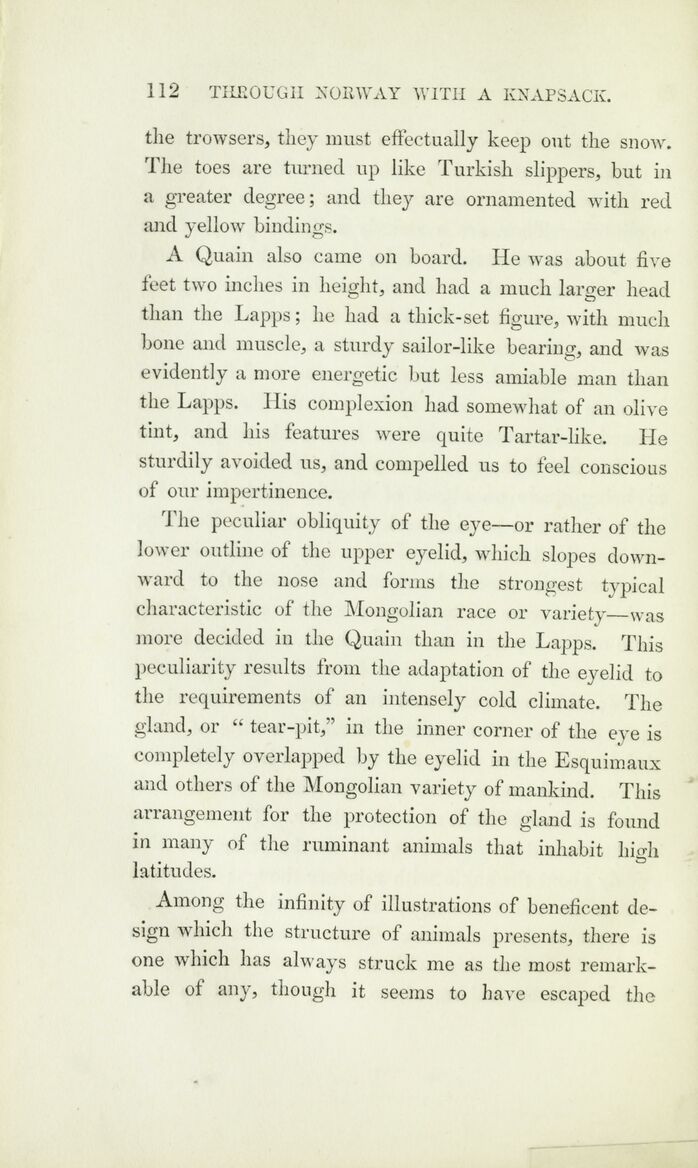
Full resolution (JPEG) - On this page / på denna sida - Chapter VI

<< prev. page << föreg. sida << >> nästa sida >> next page >>
Below is the raw OCR text
from the above scanned image.
Do you see an error? Proofread the page now!
Här nedan syns maskintolkade texten från faksimilbilden ovan.
Ser du något fel? Korrekturläs sidan nu!
This page has never been proofread. / Denna sida har aldrig korrekturlästs.
112 THROUGH NORWAY WITII A KNAPSACK.
the trowsers, they must effectually keep out the snow.
The toes are turned up like Turkish slippers, but in
a greater degree; and they are ornamented with red
and yellow bindings.
A Quain also came on board. He was about five
feet two inches in height, and had a much larger head
than the Lapps; he had a thick-set figure, with much
bone and muscle, a sturdy sailor-like bearing, and was
evidently a more energetic but less amiable man than
the Lapps. Ilis complexion had somewhat of an olive
tint, and his features were quite Tartar-like. He
sturdily avoided us, and compelled us to feel conscious
of our impertinence.
The peculiar obliquity of the eye—or rather of the
lower outline of the upper eyelid, which slopes
downward to the nose and forms the strongest typical
characteristic of the Mongolian race or variety—was
more decided in the Quain than in the Lapps. This
peculiarity results from the adaptation of the eyelid to
the requirements of an intensely cold climate. The
gland, or " tear-pit," in the inner corner of the eye is
completely overlapped by the eyelid in the Esquimaux
and others of the Mongolian variety of mankind. This
arrangement for the protection of the gland is found
in many of the ruminant animals that inhabit high
latitudes.
Among the infinity of illustrations of beneficent
design which the structure of animals presents, there is
one which has always struck me as the most
remarkable of any, though it seems to have escaped the
<< prev. page << föreg. sida << >> nästa sida >> next page >>